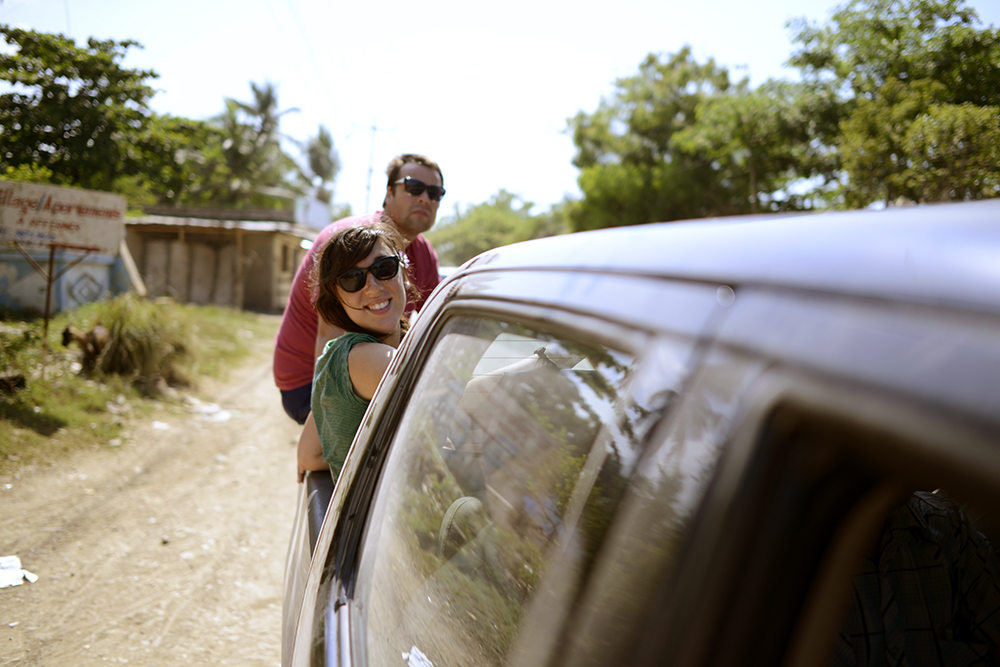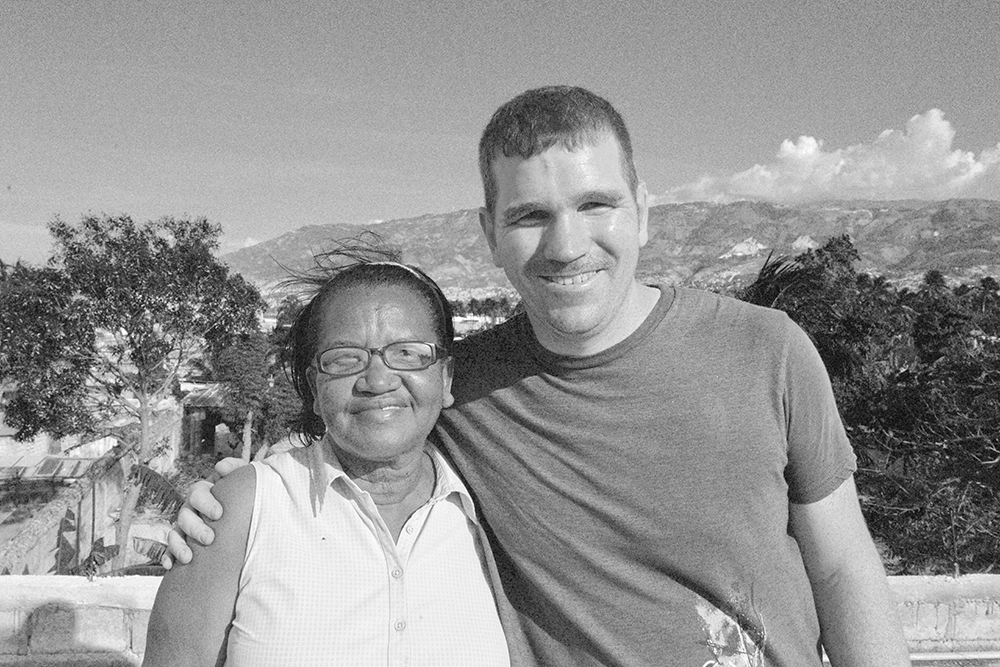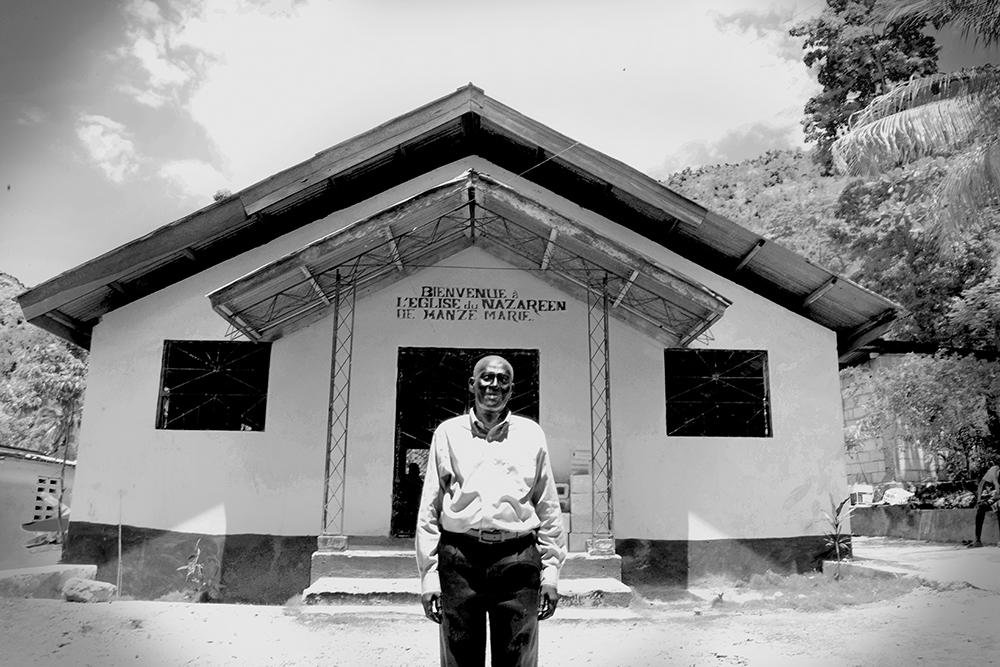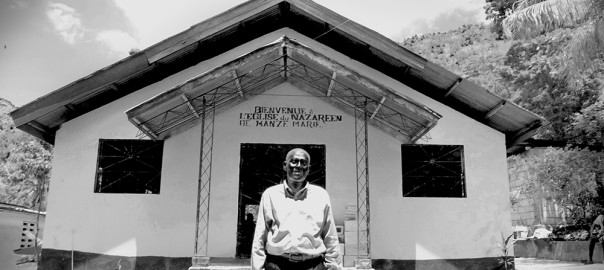The cool moist Pacific air greeted me. I sent a text to Kristen, who was waiting in the cell phone lot. “I’m outside.” Three minutes prior I walked off my Southwest flight from Chicago, the last leg of my return flight from Port au Prince. A few minutes later and I saw her pull up in our white minivan. She slid over to the passenger seat, I tossed my bags into the back, and the trip was officially over.
16 hours earlier, in pre-dawn light, Praying Pelican Missions staffer Gens greeted me with a sleep-foggy smile. He was on airport duty, responsible for driving Wes and I 45 minutes across town to the airport. He was tired, but smiling. I was tired, sore and forcing a smile. And Wes was more awake than both of us combined, also eager to get to the airport and home to his wife.
As we drove across Carrefour and Port au Prince, both cities fully awake, streets busy, and markets full in the relative coolness of the pre-dawn air, I started to reflect on our time in Haiti, celebrate a successful vision trip, and wonder about the next time I might be able to come back.
“So how are things in Haiti?” I’d like to answer that by sharing some observations of our time.
Here we go.
On-the-ground development is strong…

As I shared last July, the nation of Haiti has shifted gears from earthquake recovery. Four years after the earthquake that killed hundreds of thousands and displaced millions, there are far less people living in tent cities and lots of people who have either relocated to another area of Haiti to start a new life or been able to repair/rebuild their homes.
Everywhere you go in Haiti you see signs of economic development. Small shops are busy. Roadside stands are everywhere. It seems like everyone is making, growing, or otherwise selling something. It’s a stark contrast to what you saw in 2010 and I take all of that as a sign that there’s still a lot of hope in Haiti at the local level.
There’s also lots of bigger, governmental development going on. Things like the recycling program have dramatically reduced the amount of liter you used to see all over the city. But there’s even huge improvements to the road systems, the airport received major improvements, and the infrastructure itself is seeing investment. Things like 24 hour electricity are now within reach.
Traveling to Haiti is Easier…

It starts with the airport.
In the past, the airport was the sketchiest part of your entire trip because the airport was just such a contrast to a U.S. airport. The other side of the immigration line used to be the literal entry point into full-blown chaos with people asking you questions, trying to sell you stuff, and guys in red shirts trying to snatch your bags under the guise of being a helpful porter. That’s all gone. The rebuilt Port au Prince airport is pretty nice. I’d put it on par with some small, regional airports in the States. You now go through a deplane, immigration, baggage claim, and customs experience very similar to landing in any other developing country. The airport is not scary at all, anymore.
The improvements go well beyond the airport, too.
Traveling, in general, is easier. While we are still a long way away from visitors grabbing a rental car or hotels offering free shuttles to nearby airport hotels, getting around is getting more comfortable and predictable. (Unless you speak Creole and are very familiar with Haiti… it’s still not a do-it-yourself kind of place. You need help, drivers and guides.)
Roads are better. I saw a few very modern tour busses. And there are more and more rumors of Western-style hotels popping up. That might seem like an odd thing to get excited about, but it is showing that the thousands of Western “helpers” who have come to Haiti have seen past the grime and fallen in love with the country enough to want to come back to relax and enjoy Haitian culture. And that, in itself, is amazing to witness.
Partnerships in Haiti remain healthy…

Let’s talk about this in general and specific ways.
Generally, the earthquake was a pivot point for many outside organizations working in Haiti. The earthquake helped break free a lot of old dependencies while bringing lots of new-styled partnerships to the table. So, in general, churches and organizations working in Haiti are building partnerships on mutual values and an eye on development… as opposed to systemic dependencies that have riddled 100 years of work. The idea that “white men fix things and bring money” is probably still there. But I’ve certainly not seen evidence in those types of partnerships in my work. Quite the opposite.
Specifically, my work alongside Praying Pelican Missions continues to show that partnerships are flourishing. In the past, an organization like PPM would have dictated the terms and it would have been very clear that PPM was in charge while the local church wasn’t. Over and over again I’ve seen how PPM intentionally avoids that pitfall in two specific ways.
- In every way I’ve seen, they are acting under the authority of the local church. This impacts what they do, how teams interact, how often teams work at specific locations, when they come, how they dress, what they eat… etc.
- They have raised up local leaders to take the place of Westerners. It’s been very exciting for me to get to know the PPM staff that work in Haiti. These are amazing people, doing very difficult work, but doing it with joy in a system that is “flat.” In other words, there isn’t a peak role that a Haitian staff member can do and an American staff member isn’t automatically over all of the local leaders. (I’ll write more about this another time.)
The Haitian church is still calling…

I’ve shared all of this good news to lead to this one point: The Haitian church is ready for you.
In our churches, culture (and to a lesser extend, the legal system) limit what we do to church-based programs. That’s simply not the case in Haiti where “holistic ministry” has been the norm forever. This past weekend, every pastor we met shared holistic vision that goes well beyond the normal programs of a U.S. church. Whether that manifests itself as a school or medical clinic or starting a mill so local farmers can process their crops and make more profit… the Haitian church remains ambitious, looking for practical ways to be Good News in the Neighborhood.
This past weekend I spent several days with youth workers from around the country openly asking the question, “Should I bring my students to Haiti?” And over and over again, we met church leaders in Haiti who opened their homes, ministries, and lives to ask you this: “Will you consider coming to Haiti to partner with the local church?”

Leave a Reply